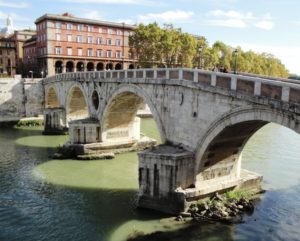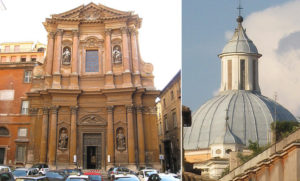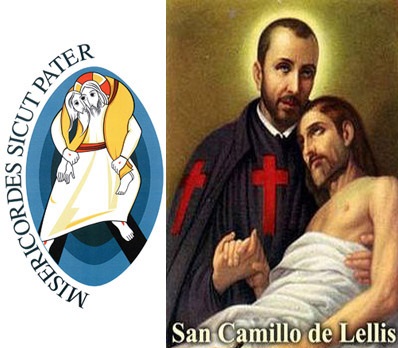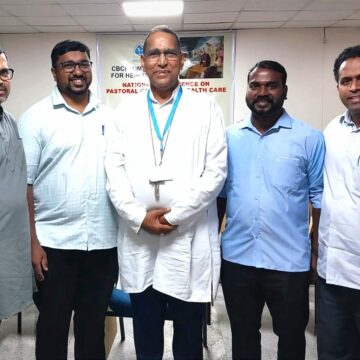 One of the many small hospitals that existed at the time of St. Camillus to face emergencies such as the incalculable mass of beggars invading Rome in times of famine and cold. The problem of beggars appeared in its full extent, after the rise to the papacy of Sixtus V, who, among other things, bought some houses near the Ponte Sisto, on the left bank of the Tiber, committed to his architect Domenico Fontana to restore them from scratch, adapting them to a Hospice able to admit 400 among elders and disabled.
One of the many small hospitals that existed at the time of St. Camillus to face emergencies such as the incalculable mass of beggars invading Rome in times of famine and cold. The problem of beggars appeared in its full extent, after the rise to the papacy of Sixtus V, who, among other things, bought some houses near the Ponte Sisto, on the left bank of the Tiber, committed to his architect Domenico Fontana to restore them from scratch, adapting them to a Hospice able to admit 400 among elders and disabled.
The presence of St. Camillus
The winter between 1590 and 1591 reserve a famine and a ruthless climate to Rome: thousands have died of hunger and cold and the poor are even forced to eat dogs and cats caught in the streets. Camillus never ceases to help the infirm and missing, everywhere they can be achieved. He sends eight men of his Congregation to help the St. Sixtus Hospice, where every day a multitude of infirm dies, and he himself takes part in the rescue effort. In eight days five of the Camillians die working in the Hospice, bitten and pierced by countless lice stings.
What remains
Although the Hospice is detectable in the block bounded by the Lungotevere Vallati, Via dei Pettinari, Via delle Zoccolette and Via del Conservatorio, there is no tangible trace left..
To see
Church of the Holy Trinity of the Pilgrims: the church, which dates from the early seventeenth century, has had a significant importance in the history of Rome. It was built by the Archconfraternity of SS. Trinità dei Pellegrini,  founded by the inspiration of St. Philip Neri and directed by him, with the specific mission to welcome and assist pilgrims in Rome. The church, therefore, is rooted in the mission of St. Philip Neri, called “the third Apostle of Rome”, who dedicated his work to bring the faithful back to a living and zealous practice of Faith through liturgy, processions, devotions.
founded by the inspiration of St. Philip Neri and directed by him, with the specific mission to welcome and assist pilgrims in Rome. The church, therefore, is rooted in the mission of St. Philip Neri, called “the third Apostle of Rome”, who dedicated his work to bring the faithful back to a living and zealous practice of Faith through liturgy, processions, devotions.
Nearby
Palazzo Farnese: palace granted from 1936 to the French Government, which there has established its embassy in Italy, for a period of 99 years. Example of the synthesist current of Sangallo in the Renaissance architecture of the sixteenth century, it stands in the homonymous square, in the quarter Regola.
Ponte Sisto:
constructed to allow the crossing of the Tiber by Pope Sixtus IV between 1473 and 1479, on the site of an ancient Roman bridge. It connects the two banks of the river between Via del Pettinari and Piazza Trilussa. It was the only bridge over the Tiber to be built between the fall of the Empire and the nineteenth century.















Camillians on Facebook
Camillians on Twitter
Camillians on Instagram